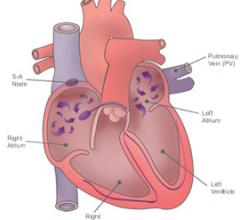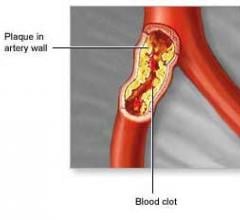September 7, 2010 – Enrollment started in the Endovascular Atherectomy Safety and Effectiveness (EASE) study to evaluate the safety and effectiveness of the Phoenix Atherectomy catheter. The minimally invasive device treats peripheral arterial disease (PAD) in the legs. The U.S.
September 7, 2010 – New analyses of subgroups from the SORT OUT III study provide detail on longer-term follow-up safety and efficacy outcomes in diabetics and patients with acute coronary syndrome and multiple lesions.Three new analyses of subgroups were presented at the European Society of Cardiology (ESC) meeting last week in Stockholm.
September 7, 2010 - With increasing rates of patients with atrial fibrillation program suffering from severe strokes, medical associations fear an epidemic. New developments in minimally invasive therapy of atrial fibrillation are booming and will be evident at MEDICA 2010, World Forum for Medicine - International Trade Fair and Congress, to be held from Nov.
Providing exceptional cardiovascular care for patients to achieve the best possible outcomes is the number one goal for ...
September 2, 2010 - The STAR-heart study, which was presented at the European Society of Cardiology 2010 Congress in August 2010, reported that the intracoronary injection of autologous stem cells derived from bone marrow is associated with improved hemodynamics and long term survival in the treatment of chronic heart failure.
September 2, 2010 - A single-patient disposable blood pressure cuff that travels with the patient throughout her hospital stay is reducing the risk of spreading infectious disease and decreasing overall costs.
September 2, 2010 – The Smithsonian's National Museum of American History recently accepted the donation of a prototype medical emergency crash cart, referred to as MAX. It accepted the donation from ECRI Institute, an independent nonprofit that researches the best approaches to improving patient care.
Cardiac positron emission tomography (PET) is growing in popularity among cardiologists because it provides the ability ...
September 2, 2010 – New research released this week is the first to find both anatomical and procedural considerations that can lead to the creation of esophageal ulcerations (ESUL) after radiofrequency ablation of atrial fibrillation (AF).
September 2, 2010 – Artificial heart maker SynCardia Systems said it plans to put the company up for sale some time in the next two years.
September 2, 2010 - Women and men with a 10-year cardiovascular disease risk of 5 percent or more and normal cholesterol levels but high levels of hsCRP, a protein associated with inflammation, could reduce their risk substantially with statin therapy, according to new research.
When performing radiofrequency (RF) ablation to treat cardiac arrhythmia, medical professionals must balance the safety ...
September 1, 2010 - Two devices in one is one of the mega trends in imaging diagnostics. The spectrum ranges from a combination of positron emission tomography (PET) with magnetic resonance imaging (MRI) or computer tomography (CT) to a combination of ultrasound with endoscopy. At MEDICA 2010, World Forum for Medicine - International Trade Fair and Congress, to be held from Nov.
September 1, 2010 - The world’s first zero footprint, client-free PACS, has received the highest performance score, 93.4 out of 100, in a recent survey conducted by KLAS, an independent monitor of the quality and customer acceptance of commercially-available healthcare information technology products.
September 1, 2010 - The results of follow-up tests undertaken ten years after the first patient was treated with a Cypher sirolimus-eluting coronary stent were presented at the European Society of Cardiology in Stockholm.
Change Healthcare Cardiology Hemodynamics is an integrated hemodynamic monitoring system for monitoring vital signs and ...
September 1, 2010 – The European Society of Cardiology (ESC) upgraded fractional flow reserve (FFR) to a class I, level of evidence A, the highest class and level possible. The guidelines for FFR-guided treatment were included in the updated Guidelines on Percutaneous Coronary Intervention (PCI) announced Monday at the ESC congress in Stockholm.
September 1, 2010 – A new study on overall workforce trends in the field of cardiac electrophysiology (EP) reveals an increasing demand for EP professionals as a result of shifting demographic trends, evolving health reform policies and improved procedural outcomes.
September 1, 2010 – The first catheter to combine near-infrared (NIR) spectroscopy with intravascular ultrasound (IVUS) to characterize coronary plaque was cleared by the U.S. Food and Drug Administration (FDA).

 September 07, 2010
September 07, 2010












